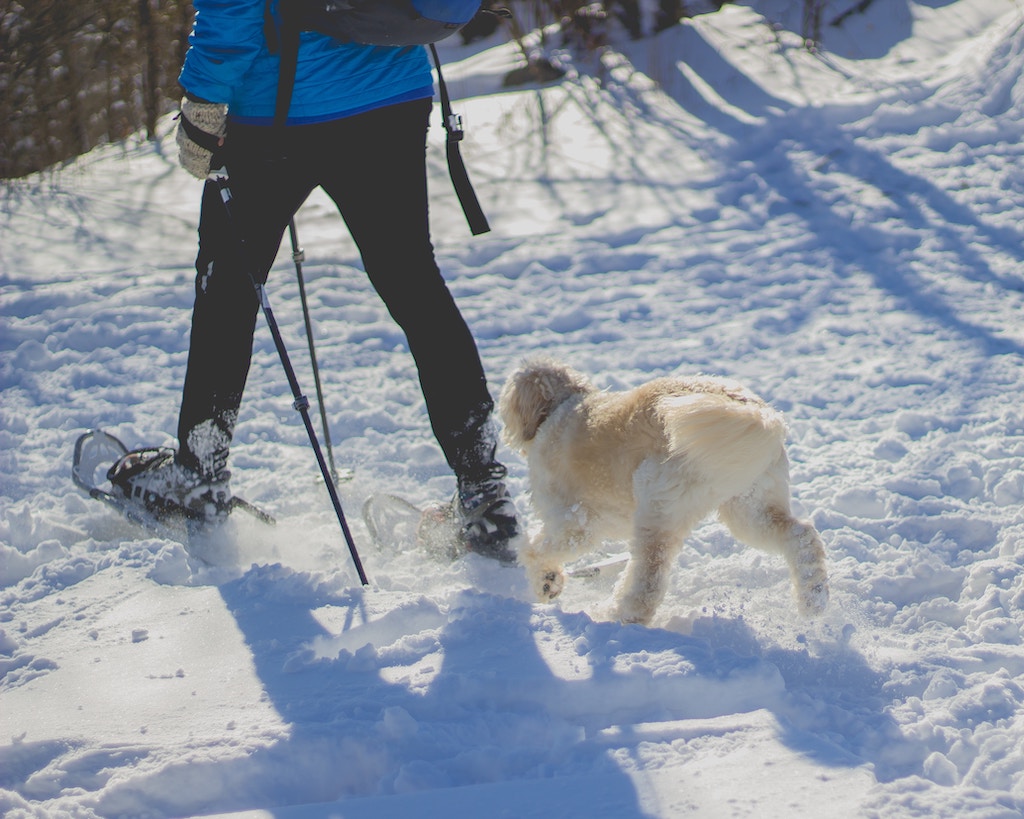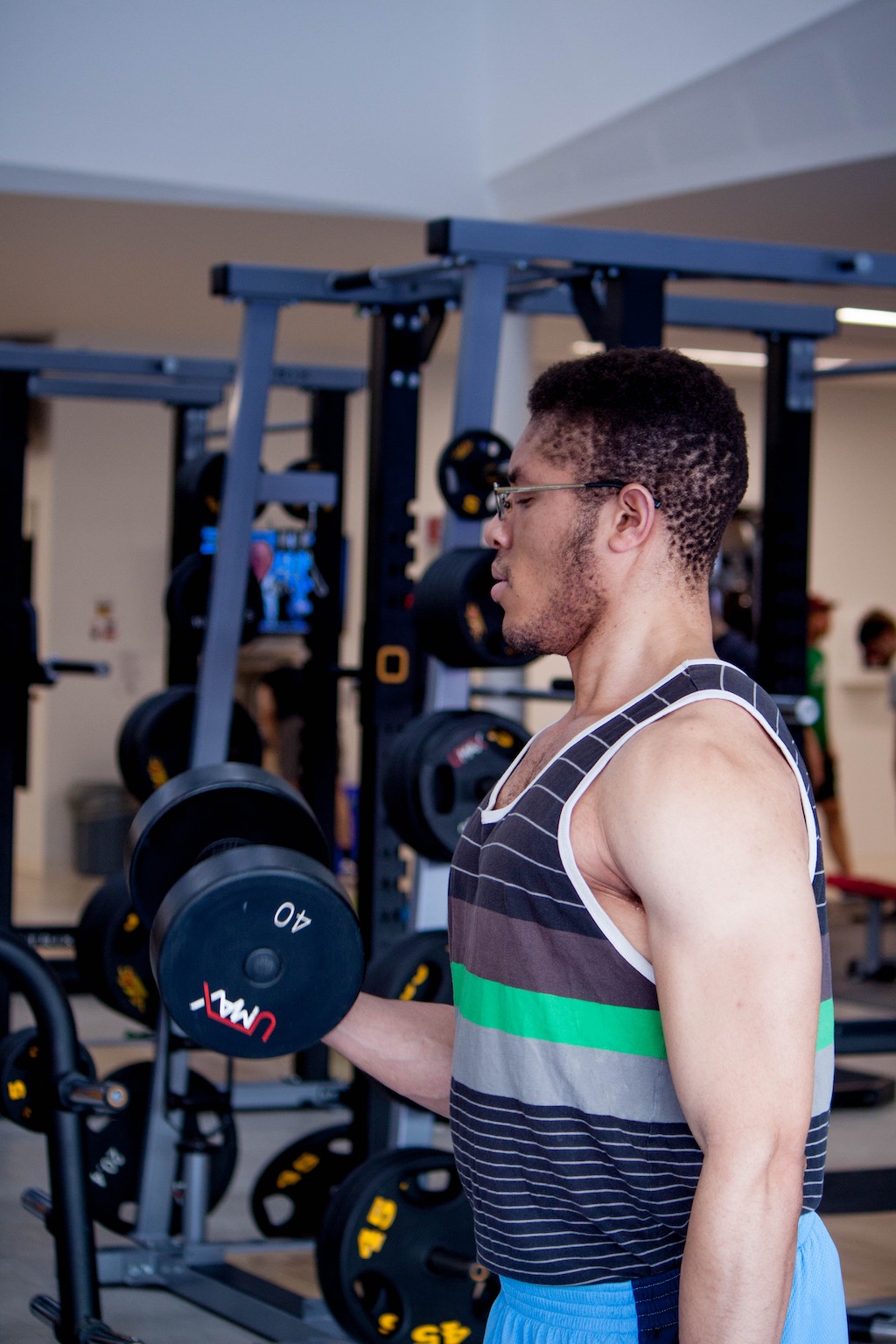2.4 Psychological Benefits
The psychological benefits of exercise complement the aforementioned cognitive and physiological benefits. Several psychological benefits include, but are not limited to: enhanced mood, reduced stress, anxiety, and depression, and improved self-esteem and body image.
Enhanced Mood
Mood, one’s state of mind or feeling, may be positively impacted by a variety of physical activity types. Resistance training programs have been associated with improved mood states in healthy adult populations (McLafferty, Wetzstein, & Hunter, 2004). Other research utilizing aerobic training programs also show promising results. Notably, even participation in light aerobic activities, such as leisurely walking, may result in overall increased positive mood (Janisse, Nedd, Escamilla, & Nies, 2004). Indeed, enhanced mood state following physical activity has been well-documented throughout decades of literature and is collectively known as the “feel-good” effect (Hyde, Conroy, Pincus, & Ram, 2011).

Photo by Bonnie Kittle on Unsplash
Stress Relief
….participation in many types of physical activity may prove especially effective in reducing stress in college students…..Participation in physical activity may decrease perceptions of stress. In a study examining leisure-time activity choice, participants who increased their physical activity engagement reported a reduction in stress levels (Schnohr, Kristensen, Prescott, & Scharling, 2005). Numerous studies also indicate the association between regular yoga practice and decreased stress levels (Field, 2011; Li & Goldsmith, 2012; West, Otte, Geher, Johnson, & Mohr, 2004). Further, participation in many types of physical activity may prove especially effective in reducing stress in college students and decreasing the number of day-to-day happenings that students perceive to be inconveniences or difficulties (i.e., “life hassles”) (Nguyen‐Michel, Unger, Hamilton, & Spruijt‐Metz, 2006).
Comprehension check:
What factors/situations do you believe present the most significant sources of stress for college students? Do you believe that physical activity may alleviate or reduce stress? Why, or why not? Please provide a detailed answer.
Reduced Anxiety
Physical activity participation may play an important role in decreasing an individual’s fears and sensations associated with anxiety. Research indicates that anxiety-related symptoms may be reduced following physical activity interventions as short as two weeks in length (Smits, et al., 2008). Multiple studies also suggest that increased adherence to physical activity programs results in reduced anxiety, especially when exercise is combined with other treatment options such as therapy and medication (Jayakody, Gunadasa, & Hosker, 2013). Of note, both aerobic and anaerobic exercise regimens reduce symptoms of anxiety (Jayakody, Gunadasa, & Hosker, 2013).
Reduced Risk for Depression
National guidelines recommend physical activity as an important component of a depression treatment program.Depression is a significant health issue, with major depressive disorder ranking as the most prevalent clinically-diagnosed mental disorder (Kessler et al., 2005). National guidelines recommend physical activity as an important component of a depression treatment program (National Institute for Clinical Excellence, 2009; WHO, 2016). A recent in-depth analysis examining the effects of various physical activity interventions on depression indicated that exercise is effective in reducing depressive symptoms, with the positive effects observed when physical activity is delivered both as a stand-alone treatment or in addition to medication (Kvam, Kleppe, Nordhus, & Hovland, 2016). Notably, when combined with prescribed medication, regular physical activity participation over time may be superior in preventing depression relapse when compared to medication alone (Babyak et al., 2000).
Improved Self-Esteem
Physical activity participation positively impacts self-esteem. Individuals who identify as “exercisers” report more positive body image than individuals who do not identify as “exercisers” (i.e., do not participate in regular physical activity) (Hausenblas & Fallon, 2006). Further, research has also indicated that body image can be enhanced in both inactive and active individuals following a physical activity intervention (Hausenblas & Fallon, 2006). These are noteworthy findings as self-esteem may be an important factor for college-aged students in particular. Students who engage in educational programs which promote physical activity report increased physical self-esteem and subsequently increased quality of life indices (Joseph, Royse, Benitez, & Pekmezi, 2014).

Photo by Trust “Tru” Katsande on Unsplash
Note: Physical activity should never replace medically prescribed treatment or therapies for mental wellness; physical activity regimens should be cleared with your healthcare provider.
Works Cited
Babyak, M., Blumenthal, J. A., Herman, S., Khatri, P., Doraiswamy, M., Moore, K., … & Krishnan, K. R. (2000). Exercise treatment for major depression: maintenance of therapeutic benefit at 10 months. Psychosomatic Medicine, 62(5), 633-638.
Field, T. (2011). Yoga clinical research review. Complementary Therapies in Clinical Practice, 17(1), 1-8.
Hausenblas, H. A., & Fallon, E. A. (2006). Exercise and body image: A meta-analysis. Psychology and Health, 21(1), 33-47.
Hyde, A. L., Conroy, D. E., Pincus, A. L., & Ram, N. (2011). Unpacking the feel good effect of free-time physical activity: between-and within-person associations with pleasant-activated feeling states. Journal of Sport & Exercise Psychology, 33(6), 884.
Janisse, H. C., Nedd, D., Escamilla, S., & Nies, M. A. (2004). Physical activity, social support, and family structure as determinants of mood among European-American and African-American women. Women & Health, 39(1), 101-116.
Jayakody, K., Gunadasa, S., & Hosker, C. (2013). Exercise for anxiety disorders: systematic review. British Journal of Sports Medicine, bjsports-2012.
Joseph, R. P., Royse, K. E., Benitez, T. J., & Pekmezi, D. W. (2014). Physical activity and quality of life among university students: exploring self-efficacy, self-esteem, and affect as potential mediators. Quality of Life Research, 23(2), 659-667.
Kessler, R. C., Berglund, P., Demler, O., Jin, R., Merikangas, K. R., & Walters, E. E. (2005). Lifetime prevalence and age-of-onset distributions of DSM-IV disorders in the National Comorbidity Survey Replication. Archives of General Psychiatry, 62(6), 593-602.
Kvam, S., Kleppe, C. L., Nordhus, I. H., & Hovland, A. (2016). Exercise as a treatment for depression: A meta-analysis. Journal of Affective Disorders, 202, 67-86.
Li, A. W., & Goldsmith, C. A. (2012). The effects of yoga on anxiety and stress. Alternative Medicine Review, 17(1), 21-35.
McLafferty, C. L., Wetzstein, C. J., & Hunter, G. R. (2004). Resistance training is associated with improved mood in healthy older adults. Perceptual and Motor Skills, 98(3), 947-957.
National Institute for Clinical Excellence. (2009). Depression: the treatment and management of depression in adults (update). Clinical guideline, 90.
Nguyen‐Michel, S. T., Unger, J. B., Hamilton, J., & Spruijt‐Metz, D. (2006). Associations between physical activity and perceived stress/hassles in college students. Stress and Health, 22(3), 179-188.
Schnohr, P., Kristensen, T. S., Prescott, E., & Scharling, H. (2005). Stress and life dissatisfaction are inversely associated with jogging and other types of physical activity in leisure time—the Copenhagen City Heart Study. Scandinavian Journal of Medicine & Science in Sports, 15(2), 107-112.
West, J., Otte, C., Geher, K., Johnson, J., & Mohr, D. C. (2004). Effects of Hatha yoga and African dance on perceived stress, affect, and salivary cortisol. Annals of Behavioral Medicine, 28(2), 114-118.

